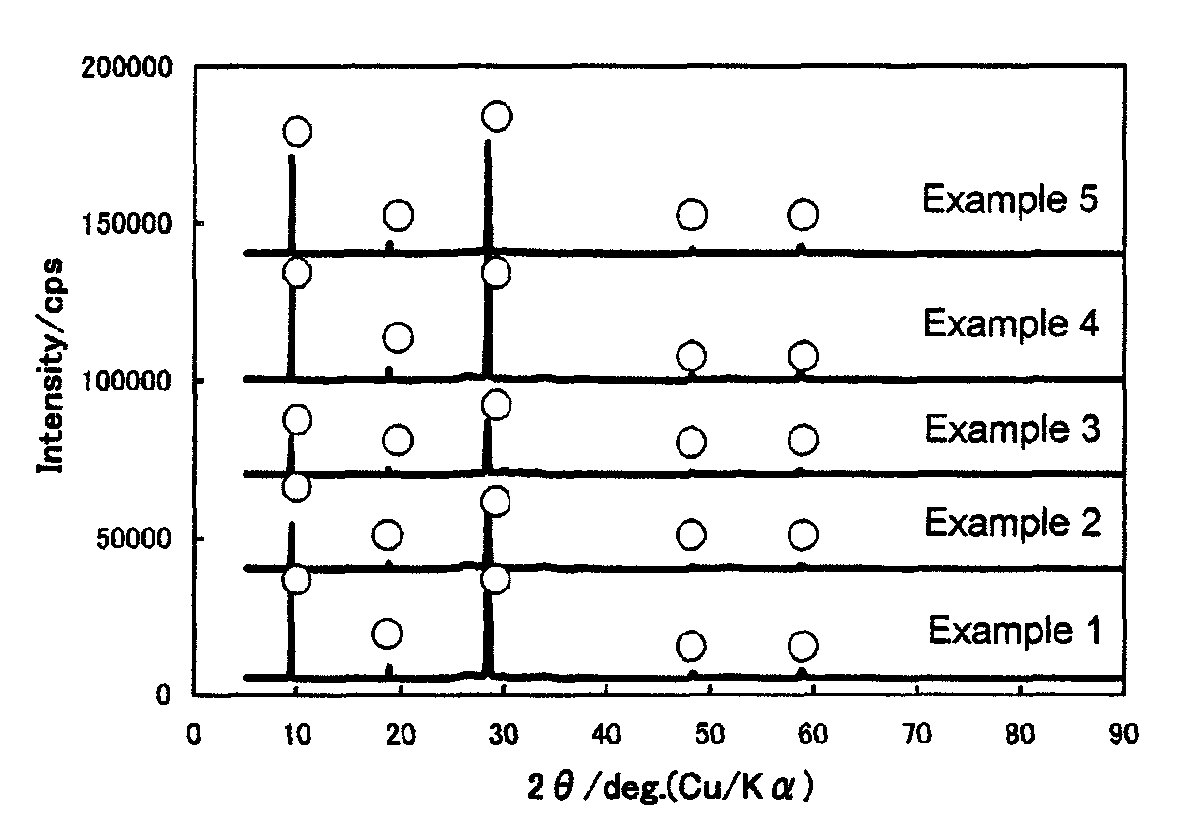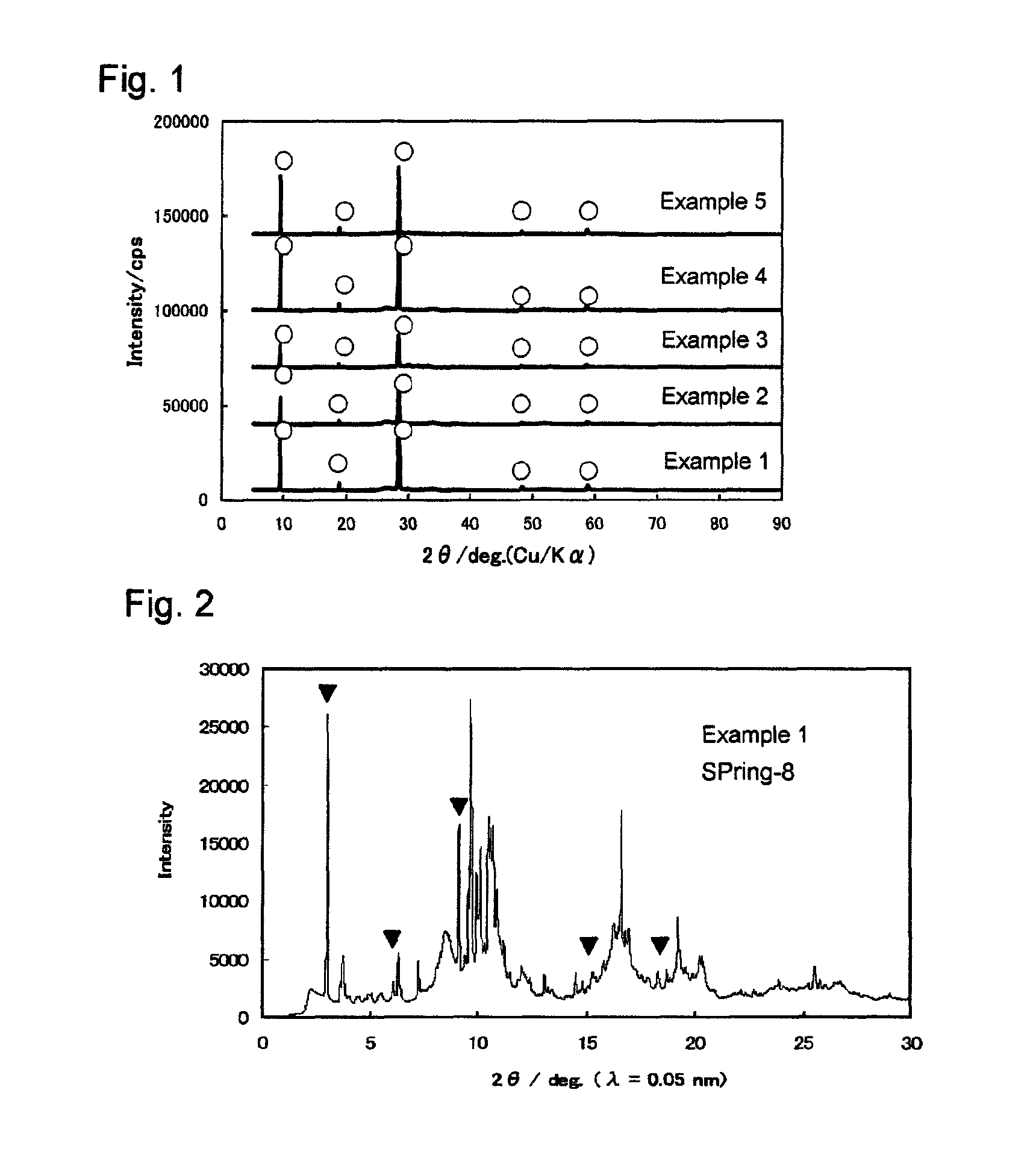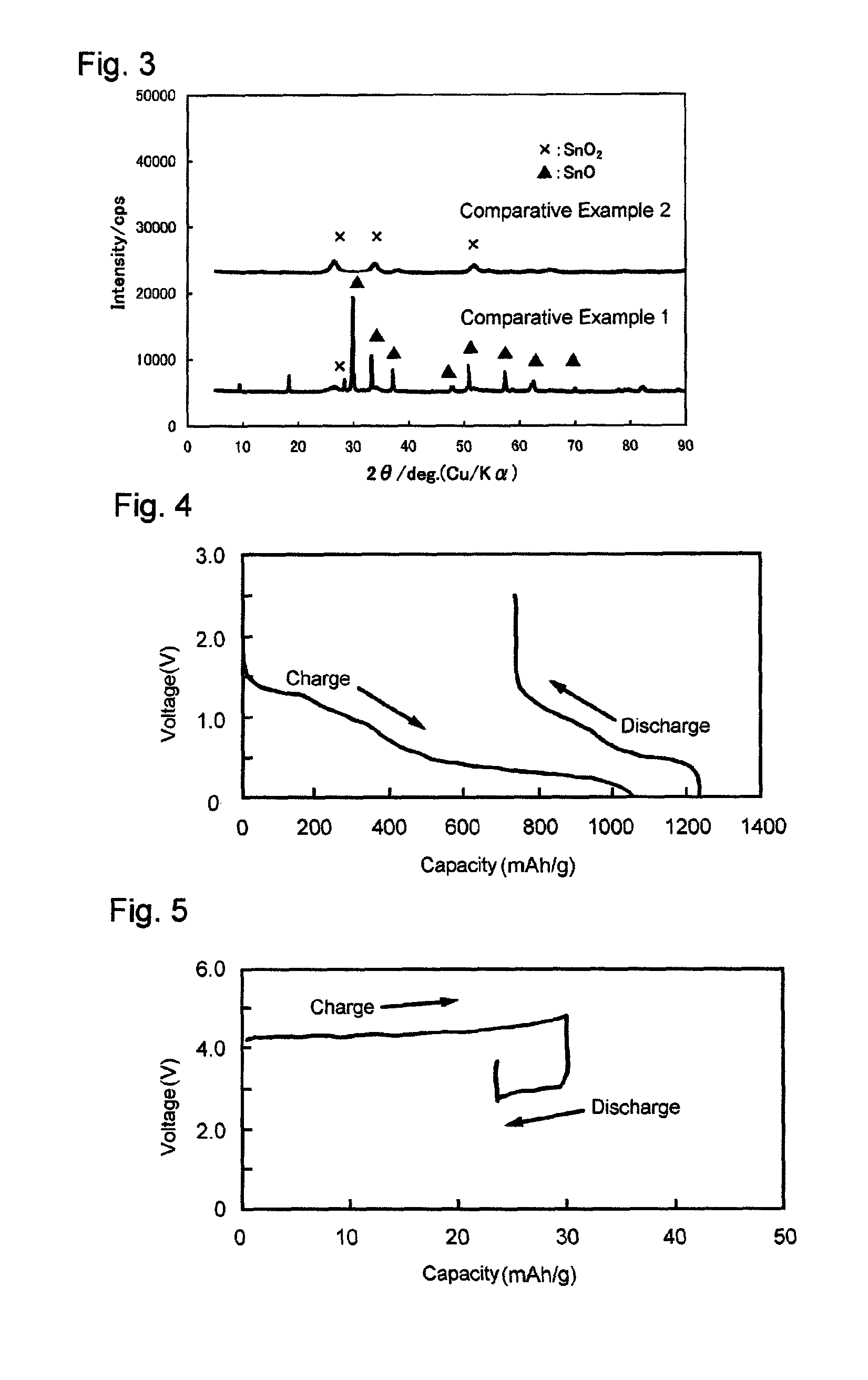Tin oxide particles and process for producing the same
a technology of tin oxide particles and oxide conductors, applied in the field of new materials, can solve the problems of environmental burden, limit the utility of plastics, and limit the utility of plastics, and achieve the effect of excellent transparency and electroconductivity
- Summary
- Abstract
- Description
- Claims
- Application Information
AI Technical Summary
Benefits of technology
Problems solved by technology
Method used
Image
Examples
example 1
[0063]In 418 g of pure water was dissolved 4.51 g of sodium hydroxide to prepare an aqueous alkali solution for neutralization. Separately, 0.5 g of polyvinyl alcohol (hereinafter abbreviated as PVA) partially saponified and having an average degree of polymerization n=1500 to 1800 was put in a 200 ml beaker previously containing 100 g pure water and dissolved by heating to 60° C. to prepare an aqueous PVA solution. Separately, 14.97 g of tin dichloride dihydrate was dissolved in 383 g of pure water in a beaker to prepare an aqueous tin solution. The whole amount of the aqueous PVA solution was added to the aqueous tin solution, and the system was thoroughly mixed up to obtain a mother liquor.
[0064]The mother liquor was heated to 90° C. while stirring with a paddle stirrer, and the whole amount of the above prepared aqueous alkali solution was fed thereto over 90 minutes using a tube pump (feed rate: about 5 ml / min). During the alkali addition, the mother liquor had a pH of 3 to 4. ...
example 2
[0072]Tin oxide particles were obtained in the same manner as in Example 1, except for using 0.5 g of ethanol in place of PVA. The resulting tin oxide particles were analyzed in the same manner as in Example 1. The results obtained are shown in FIG. 1 and Table 2.
example 3
[0073]Tin oxide particles were obtained in the same manner as in Example 1, except for using 0.5 g of n-butanol in place of PVA. The resulting tin oxide particles were analyzed in the same manner as in Example 1. The results obtained are shown in Table 2.
PUM
| Property | Measurement | Unit |
|---|---|---|
| 2θ | aaaaa | aaaaa |
| 2θ | aaaaa | aaaaa |
| 2θ | aaaaa | aaaaa |
Abstract
Description
Claims
Application Information
 Login to View More
Login to View More - R&D
- Intellectual Property
- Life Sciences
- Materials
- Tech Scout
- Unparalleled Data Quality
- Higher Quality Content
- 60% Fewer Hallucinations
Browse by: Latest US Patents, China's latest patents, Technical Efficacy Thesaurus, Application Domain, Technology Topic, Popular Technical Reports.
© 2025 PatSnap. All rights reserved.Legal|Privacy policy|Modern Slavery Act Transparency Statement|Sitemap|About US| Contact US: help@patsnap.com



